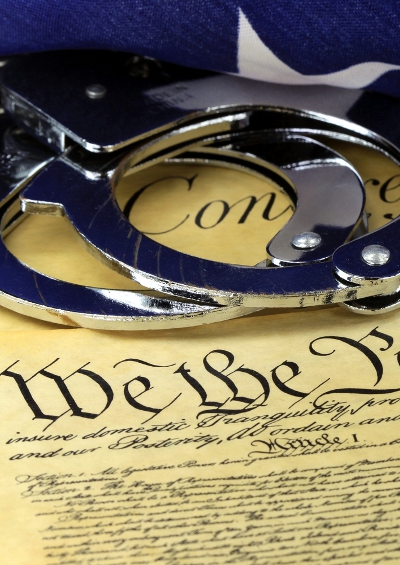An End to Presidential Term Limits?
How modern U.S. politics incapacitates itself.
August 16, 2014

This may be the unlikeliest of times to suggest an end to the 22nd Amendment to the U.S. Constitution, the term limit for U.S. President — or the best moment ever to give it serious consideration.
Barack Obama is despised by Republicans who are counting down the days before he leaves the White House. And ever more Democrats are getting the Hillary itch.
Nobody can argue right now that the issue is raised for purposes of partisan politics. Rather, it is a matter of governability and political effectiveness.
Why not three terms?
The overarching question is this: Why should U.S. Presidents, if they so choose, be denied to stand for a third term? Admittedly, the prospect for that to happen isn’t very high. After all, being President of the United States must be among the world’s most thankless jobs.
The current mindset in the U.S. establishment actually runs in the opposite direction. Larry Summers, the former Treasury Secretary and Harvard President, recently opined that single terms for Presidents, of say six years, might be better.
In a rare case of hemispheric harmony, the United States would thereby draw closer to the political practice Latin America, but it would do so at a time when those countries are actually moving away from term limits.
As it stands, the U.S. body politic — by not allowing a president, should he or she desire to do so, to run again — actually willfully emasculates its chief executive.
Come the sixth year of a reelected president’s second term, he is automatically considered a “lame duck,” even though they are still very much vested with the pomp and ceremony that comes with the Oval Office.
An emperor without clothes
That glitziness cannot mask the fact that the office of the president at that point is increasingly an emperor without clothes. What is of concern here, of course, is not so much the fate of the individual as the effect this has on the nation as a whole, as well as the U.S.’s standing in the world.
Here is a breathtaking calculation: Including the fact that it takes a successor in the White House a year to stand up his or her administration, the two-term limit means that the United States may effectively be without a President that is considered a serious negotiating partner for at least three out of every nine years.
Democratic countries like Germany and the UK would never incapacitate their own democratically elected leaders that way.
It is a form of self-crippling that other powers like the Chinese — where a collective leadership gets to rule for a span of ten years — must love, because it reduces the U.S.’s political agility and effectiveness.
Why stymie successful Presidents?
The 22nd Amendment was proposed by a Republican Congress in 1947 and rapidly rammed through the state legislatures. It had the ostensible purpose of ridding the United States for the future of another four-term President, as the recently deceased Democrat Franklin D. Roosevelt had been. It holds that
“No person shall be elected to the office of the President more than twice, and no person who has held the office of President, or acted as President, for more than two years of a term to which some other person was elected President shall be elected to the office of the President more than once.”
An effective solution?
The consideration that mere physical death (FDR had notably died less than three months into his fourth term, after 12 years into office) could provide an effective solution to the issue apparently did not enter much into the minds of the Congressional deliberators as they rushed it ahead.
The amendment’s backers also did not seem to consider the fact that it is a rare feat for any executive to be reelected so many times over a long span, whether in the United States or in other advanced democracies.
France’s Fifth Republic managed to survive presidents who served more than one seven-year term. (François Mitterrand’s 14 years exceeded Roosevelt’s actual 12.)
Nor did the amendment’s hasty proponents weigh the fact that continuity can be vital in politics, especially a political landscape that is so fractious as the American one.
Why marvel at lame ducks?
That U.S. politicians and opinion leaders embrace the lame duck concept so readily is baffling. The United States is otherwise so keen on action and dynamism that one must wonder why everyone is prepared to disempower their own political chief executive.
That is a riddle that no foreigners will ever understand. What they do see with clear eyes, though, is the devastating effect of this peculiar institution of disempowering presidents.
It is as if the United States is aiding its global detractors by embracing the principle of political inefficiency. Never mind that, during those “lame duck” years, the very real concerns of real people get effectively postponed.
Domestic legislation moves even more glacially in those years than it does in general. That makes it all the harder to understand that the lame duck quasi-sabbatical turns further inaction into an (almost) constitutionally approved choice.
Madness as method?
Why the deeply anti-democratic instinct that shines through the two-term limit for U.S. Presidents? Is the goal to rule out the emergence of a rare transformative figure, somebody who really manages to shake up the U.S.’s painfully frozen political formulas and overall landscape — as FDR certainly did?
In the real world of elections, there can be no talk of a “power grab.” Anyone getting to a third term must, after all, be dutifully elected — and would be thus legitimized by the American people as a whole.
Moreover, it is already a significant feat for a President even to get reelected once. So far, 18 of the 43 men who have held the office have done so (22 if one counts those elected to their own terms after taking over after a predecessor’s death).
Franklin D. Roosevelt was only the fifth person to attempt a bid for even a third presidential term (let alone a fourth) – and the first to succeed in winning one.
That his spectacular achievement owed much to an ongoing world war – who wants to change leaders in wartime? – is by now conveniently forgotten.
Horse race vs. people’s business
Consider the current spectacle of launching the jockeying for the U.S. presidential race in 2016. Americans are being treated to two full years of a strange spectator sport that may fascinate political insiders in Washington. Has Hillary Clinton broken with the sitting President? Who is emerging in the other party?
Focusing on these horse race aspects has its fascination for America’s self-absorbed political class and its media sidekicks.
However, what gets bumped to the sidelines in such a world where everyone is exploring who’s up and who is down, and members of Congress and campaign financiers are figuring out whom to associate with and whom to abandon, is “the people’s business,” the real-life concerns of the population at large
It is one thing to obsess about who’s going to win the Kentucky Derby, the Preakness and the Belmont Stakes. But even in the case of those races for the Triple Crown to find the fastest horse in the United States, the speculation with who might win at best only lasts for a week before the event, as far as the general public is concerned.
The U.S. public is not so lucky when it comes to the race for the White House. Already, Hillary Clinton’s real or perceived health issues take on more sizzle than the much closer 2014 midterm elections, let alone what the forgotten White House incumbent may be choosing to do or not do.
The world on hold?
The other big irony in the current constitutional set-up is the assumption, widely held in the U.S. body politic, that the second terms of U.S. presidents are suitably devoted to their seeking their place in history – by pursuing big-sky initiatives on the global map.
This is a triple fallacy. First, the U.S. being as immobile politically as it is, for any President to have a lasting mark on the ever more pressing domestic reform needs will at least require two full terms in office. Only then could the grandiloquent talk of a “legacy” even begin to make sense.
Second, rarely is the implicit arrogance of U.S. commentators and columnists more readily visible as when they make the pronouncement about a “global” legacy. That can’t be fashioned, Madison Avenue-style. It has to be earned.
Third, it is not as if the world were waiting for the U.S. political calendar to turn around to a President’s (domestic) lame-duck stage. Never mind that the emergence of global trouble spots simply does not align with that peculiar U.S. calendar.
Moreover, a U.S. President who really wants to tackle bigger foreign-policy issues must still have considerable political capital in order to get the national legislature to go along with whatever deal s/he wants to conclude.
Self-immolation as national strategy?
Foreign-policy considerations aside, the biggest problem with the disastrous legacy of the 22nd Amendment is that it emasculates what is otherwise described by Americans as the most powerful leader on earth.
Meaningful domestic reform initiatives are basically put on hold unnecessarily. Even legislators from the President’s own party become rebellious, more concerned about positioning themselves with the current officeholder’s potential successors, rather than supporting their man or woman in the White House.
Furthermore, the evidence is that some Presidents, Obama notably included, may only come into their full potential by the time the third term rolls around. Why preclude that process?
Or consider Bill Clinton, the 42nd U.S. President. Why should he not be able to run again, 16 years older and wiser, but not lamer?
The system works well enough
Finally, let’s look at the U.S. political system in the — for now, imagined — absence of the 22nd Amendment. It turns out that this system is pretty effective at checking excess.
Modern Presidents Truman, Nixon, Reagan, Clinton and Bush II have all faced potentially career-ending crises and unpopularity by the middle of their second terms.
Truman was too unpopular to seek a third term when he tried. Nixon was forced to resign. Clinton was impeached – and Reagan was nearly impeached. George W. Bush probably would have been laughed out of office, had he been able to try to seek a third term.
Only a truly popular and effective president with a clear mandate to continue would be able to pull off a second re-election effort.
The verdict?
All in all, the 22nd Amendment has not strengthened U.S. democracy. It undermines it. It contributes to putting the circus-like aspects of politics ahead of the pursuit of solid accomplishments.
And it is distinctly not an illegitimate power grab if a person gets freely reelected to the Presidency for a third time. Only those who are deadly afraid of “government of the people, by the people and for the people” would seriously say so.
That, however, has been a vital concern of America’s elites ever since the times of the founding fathers. They were very nervous about “the tyranny of the masses.”
That this spite still prevails centuries later says something pivotal about the unreformed state of American politics. It is far from the global vanguard. In the world of democratic nations, it is the rearguard, the most 19th century regime still projecting itself into the 21st.
Takeaways
Read previous

Global Travel Champion
August 16, 2014
